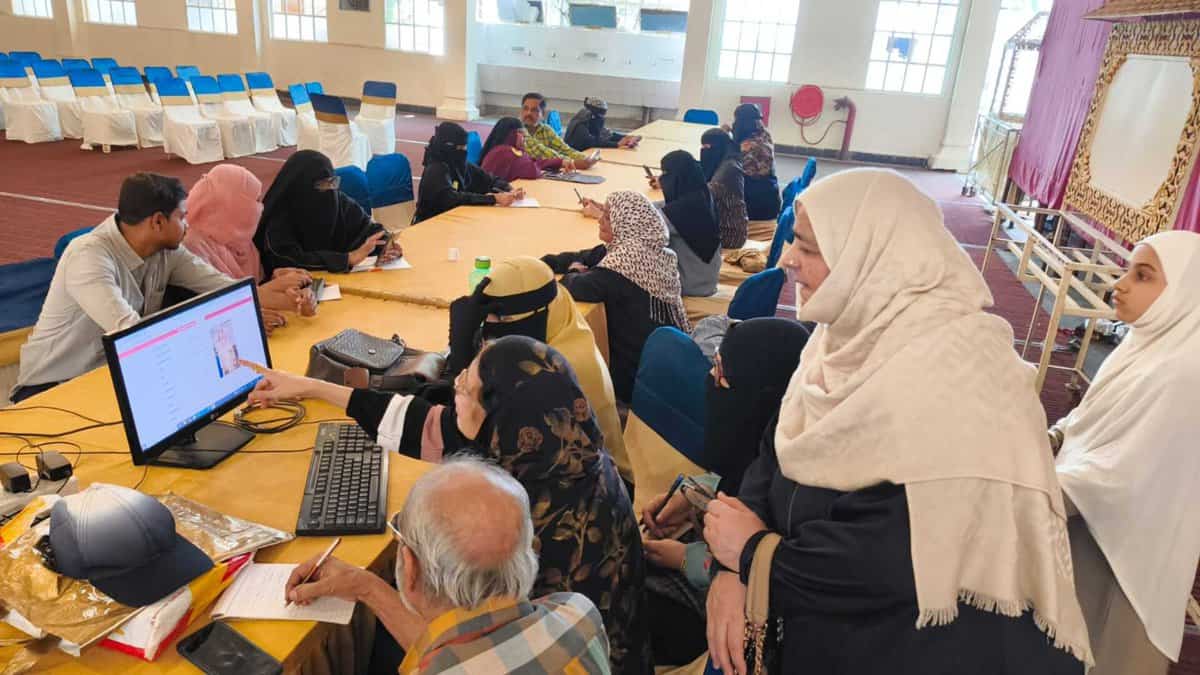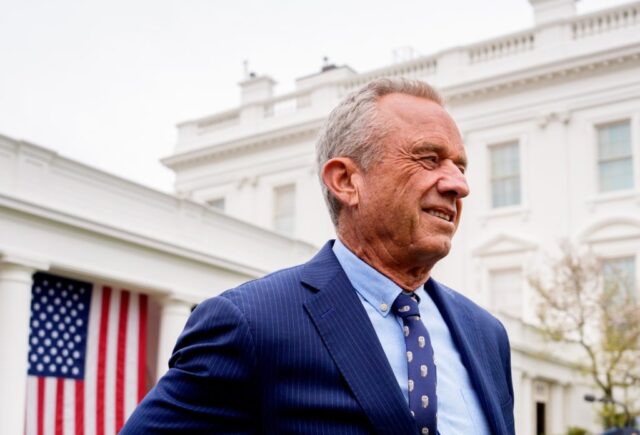The Trump administration says the merging and downsizing of some Health and Human Services agencies is aimed at realigning them toward the “core mission” of ending chronic disease. But some HHS workers are skeptical that the restructuring will achieve Secretary Robert F. Kennedy Jr.’s stated goals.
In a statement announcing a 20,000-employee reduction in force at the end of March, HHS said combining the agencies under a new Administration for a Healthy America (AHA), would “more efficiently coordinate chronic care and disease prevention programs and harmonize health resources for low-income Americans.”
It named six new divisions, including ones dealing with primary care, mental health and workforce.
But according to interviews with more than a dozen current and former employees from those agencies and organizations that work with them, these reductions may ripple across parts of the American health care system that many people don’t know exist yet are essential to public health. Employees interviewed for this story, who asked to remain anonymous because they were not authorized to speak publicly, said they feared the expertise lost in these across-the-board reductions would lead to real-world health and safety consequences.
WATCH: How new job cuts at the nation’s leading health agency affect Americans
“The hardest part for me has not been the fact that I may lose my job. The hardest part has been the destruction of the system. The dismantling of my life’s work,” said one employee who focuses on substance use and mental health and has not been terminated.
Targets of the reorganization include:
- The Office of the Assistant Secretary for Health, which develops policy recommendations on public health issues across HHS and houses the Surgeon General’s office
- The Health Resources and Services Administration, which focuses on health care for underserved communities
- The Substance Abuse and Mental Health Services Administration, which leads public health efforts on behavioral health
- The Agency for Toxic Substances and Disease Registry, which works on environmental hazards
- The CDC’s National Institute for Occupational Safety and Health, which researches workplace safety
It is unclear how many of the 20,000 jobs being cut come from the five affected agencies. On Thursday, Kennedy said 20 percent of those job cuts were made erroneously, and that those employees would be reinstated.
“Personnel that should not have been cut, were cut. We’re reinstating them. And that was always the plan,” Kennedy said.
With the firings being announced from the highest echelons of the department, employees have been left trying to piece together who’s been let go. In some cases, workers have had to inform their own managers that they received a Reduction in Force notice.
Some employees who have been let go have discovered that their entire office has been disbanded. This includes at least two offices in the Bureau of Primary Health Care, which overall funds nearly 1,400 community health centers in underserved communities; two offices that track behavioral health data and research; and most of theNational Personal Protective Technology Laboratory, which researches occupational safety tools, methods and equipment for workers like firefighters and miners.
WATCH: The effect of NIH funding cuts on vaccine access and hesitancy research
One employee from the National Institute for Occupational Safety and Health (NIOSH) who received a termination notice emphasized the importance of the agency’s focus on occupational exposure to toxic substances like PFAS, or “forever chemicals,” which is much higher than among the general public.
“Think of the difference between using a non-stick pan and being the worker responsible for making it. These workplace-specific exposures, their intensity, and health outcomes are unique — and they go unstudied without a dedicated, technically capable agency like NIOSH,” the employee said in an email to PBS News.
Two regional NIOSH offices focusing on mining worker safety, in Morgantown, West Virginia, and Spokane, Washington, also saw deep cuts to their workforces.
“I do not think that these actions are being done in a coordinated way to hurt the American coal industry and those who work in it. But that is the effect,” United Mine Workers of America international president Cecil E. Rogers said in a statement.
WATCH: Important HHS services ‘will grind to a halt’ with cuts, former Secretary Sebelius says
Other current and former HHS employees said it was hard to see how combining these pared-down agencies would make any of their stated missions more effective.
“Curious who is leading change management in this operation, as it is far from obvious how firing these folks and gutting the safety net will ‘improve coordination of health resources for low-income Americans,’ as the Administration has promised,” wrote Carole Johnson, the former HRSA administrator who served in the Biden administration.
“It definitely feels like [the consolidation] will be diluting our impact,” said another Substance Abuse and Mental Health Services Administration employee who has not received a termination notice. That employee noted that none of the newly announced AHA divisions explicitly cover substance use disorders.
In an email responding to questions about the absence of a substance use disorder division, an HHS spokesperson told PBS News, “the Department is now detailing the structure of each redefined division to streamline operations, enhance responsiveness to the American people, and ultimately improve the nation’s health as part of the Make America Healthy Again initiative.”
WATCH: Protestors join more than a thousand rallies across the U.S. against Trump’s policies
Several mental health advocacy organizations said they base much of their programming on the results of the National Survey on Drug Use and Health, which is a leading nationwide annual survey of about 70,000 people, providing detailed analysis on tobacco, alcohol and drug use.
“We have to have this data,” said Tim Clement, vice president of federal government affairs at Mental Health America, a national nonprofit dedicated to the promotion of mental health.
Noting that Kennedy himself is in long-term recovery from substance use disorder, Clement said they are hopeful that the Trump administration “will put mental health and substance use at the front of chronic diseases and illnesses that they want to combat and tackle. But without this data, that’s hard to do.”
The employees who run the survey received termination notices as they were preparing to write reports on the 2024 data and rolling out the 2025 survey.
“All of the expertise and technical skill to work with these data systems was all cut that morning,” said Jennifer Hoenig, director of the Office of Population Surveys at the Substance Abuse and Mental Health Services Administration.
She received a termination notice, along with the 16 other employees in her office, on April 1.
Insightful, trustworthy journalism, for everyone.
Your tax-deductible donation directly supports our mission. Support PBS News Hour today.

















































